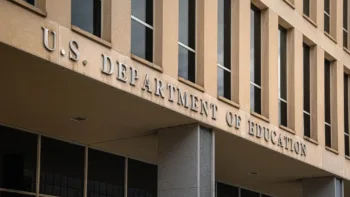
Since President Trump returned to office, headlines about the Department of Education (DOE) have taken a serious turn. His administration is actively pursuing efforts to shut down the agency—a move that could reshape how education is managed in the U.S. entirely. This isn’t just talk; political allies are pushing forward with plans to dismantle the DOE and shift its responsibilities to other departments within the government.
Legal and policy experts are raising concerns, with many questioning whether such a shutdown is even constitutional without Congressional approval. According to The New York Times, “Any effort to fully eliminate the department would have to go through Congress.”
If you rely on student aid programs such as Pell Grants, FAFSA, or federal loan forgiveness, it’s essential to understand what’s happening, what could change, and what protections may still be in place.
What is the Department of Education?
The Department of Education might feel like something far away from your day-to-day life—but it plays a huge role in how schools work and how students get the help they need, especially regarding financial aid. While states run their own school systems, the DOE provides federal support, funding, and protections to help keep education fair and accessible for everyone. Here are just some of the things the DOE handles:
- Federal student aid, including Pell Grants, student loans, and FAFSA
- Funding to assist low-income and disabled K-12 school students
- Support for students with disabilities under the IDEA Act
- Civil rights protections to make sure schools don’t discriminate
- Grants and programs for teacher development, school safety, and innovation
- Oversight of colleges and universities receiving federal money
Without the DOE, many of these responsibilities could fall to the states—and not every state has the same level of funding or support systems.
What Actions Have Been Taken to Dismantle the DOE?
Since returning to office, President Trump has taken several clear steps to reduce the role of the Department of Education, signaling a serious push to eliminate the agency altogether. In recent weeks, these steps have included:
- Executive Order to Close the Department of Education: On March 20, President Trump signed an executive order directing the closure of the Department of Education, with the intention of transferring its functions to state and local authorities.
- Transfer of Student Loan Management: Plans have been announced to move the management of federal student loans from the Department of Education to the Small Business Administration (SBA).
- Staff Reductions: The Department has begun significant staff reductions, with reports indicating that approximately half of the employees have been placed on administrative leave.
These actions have prompted lawsuits from teachers’ unions and advocacy groups, arguing that dismantling the Department without congressional approval is unconstitutional and jeopardizes educational opportunities for millions of students.
These developments have raised concerns about the future of federal education programs, particularly those supporting low-income students and families.
What Happens Now?
For now, many major programs, such as Pell Grants and federal student loans, are still operational, but delays, confusion, or changes could occur quickly. FAFSA processing might slow down, and some student loan support services are already seeing disruptions due to staff reductions.
If you’re currently in school or applying for aid, try to complete any paperwork as soon as possible and stay in touch with your school’s financial aid office.
Most importantly, keep an eye on trusted news sources and updates from the Department of Education or advocacy groups. These changes are happening fast, and staying informed can help you avoid missing out on critical resources.



